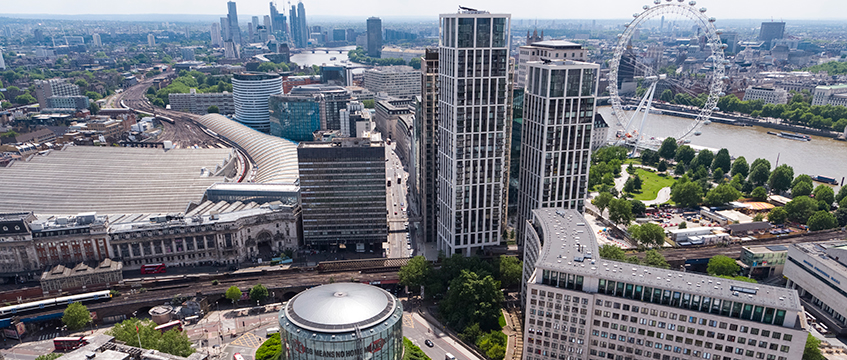Lambeth commits to 6m sq ft of new offices by 2032
Lambeth London Borough Council aims to deliver an estimated 6m sq ft of additional office space over the next 10 years.
The goal, which would represent London’s biggest increase in office space over the next decade, was detailed in the Lambeth: The Future of Sustainable Work report.
Commissioned by Lambeth Council, the report noted a total of 3.7m sq ft of office space currently in the planning process in the borough. An additional 2.3m sq ft of Cat A workspace has planning permission or is under construction across Waterloo, South Bank, Vauxhall and Brixton.
Lambeth London Borough Council aims to deliver an estimated 6m sq ft of additional office space over the next 10 years.
The goal, which would represent London’s biggest increase in office space over the next decade, was detailed in the Lambeth: The Future of Sustainable Work report.
Commissioned by Lambeth Council, the report noted a total of 3.7m sq ft of office space currently in the planning process in the borough. An additional 2.3m sq ft of Cat A workspace has planning permission or is under construction across Waterloo, South Bank, Vauxhall and Brixton.
The expansion is part of the council’s wider plans to foster well-paid jobs in growth sectors for young people, achieve net zero by 2030 and create a hub for local entrepreneurs.
Currently the borough only has 3% of London’s total office space, which the report said was “ageing, meaning it no longer suits changing ways of working or meets the borough’s ambitious climate objectives”.
The amount of available office space in the borough has fallen over the past decade, according to the report, but vacancy rates have remained low at 3.8%.
In Waterloo and Vauxhall, half of all available space let was prelet and prime rents have recorded growth of 73% and 118% respectively over the past 10 years.
The new office space is set to offer flexible working environments, support collaboration, meet high sustainability standards and facilitate worker health and wellbeing.
Also set to expand is the borough’s SC1 life sciences district, which has the potential to create 50,000 jobs by 2050, according to the report.
Lambeth is already home to occupiers across Waterloo, including IBM, Europe’s largest WeWork, The Office Group and Royal Dutch Shell, while Battersea, Nine-Elms and Vauxhall are also host to big employers, including Penguin Random House and Apple.
Danny Adilypour, council cabinet member for sustainable growth and new homes, said the borough is “set to unlock its potential over the next decade” and “is now evolving to also be a destination for world-class sustainable workspaces”.
Elaine Rossall, head of UK offices research at JLL, said: “There is strong evidence from our research of trends and the qualitative discussions with businesses and developers that a ‘flight to quality’ is taking place, with employers and employees seeking a greater experience focused on their health and wellbeing, opportunities to use the office for collaboration, and increased emphasis on sustainability and net zero.
“While Lambeth has experienced a period of office market decline in the last decade, with an ageing stock, it is now emerging from this with a significant pipeline of new high-quality, sustainable and flexible commercial space, building on its existing assets of transport connectivity, cultural amenity and a highly skilled workforce catchment.”
To send feedback, e-mail chante.bohitige@eg.co.uk or tweet @bohitige
Image © Lambeth Council











